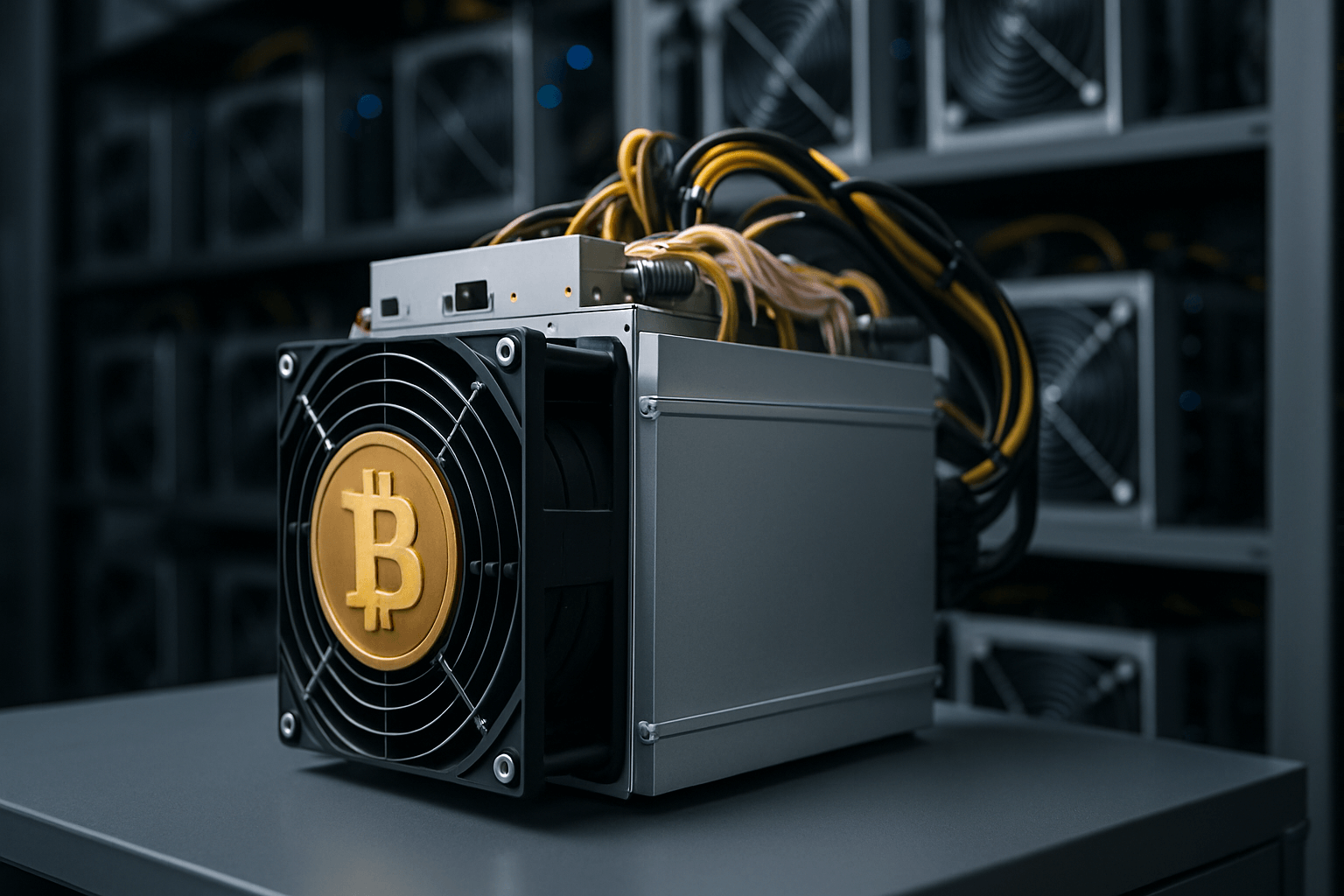Crypto & DeFi
What Is Ethereum and How Does It Work?
August 14, 2024
Crypto & DeFi
August 14, 2024

Learn all about the Ethereum blockchain and primary ways it's used today
Ethereum, often described as the world's programmable blockchain, has become a cornerstone of the cryptocurrency and blockchain ecosystem. It is an open-source blockchain platform that allows developers to build and deploy smart contracts and decentralized applications (dApps). While Bitcoin is often referred to as the pioneer of blockchain technology, Ethereum introduced a new dimension to this technology by enabling programmable contracts and applications that run on the blockchain.
In this article, we'll explore what Ethereum is, how it works, and how it differs from Bitcoin, followed by a discussion of its most popular use cases, including ERC-20 tokens, non-fungible tokens (NFTs), and decentralized finance (DeFi). Let's get to it!
The concept of Ethereum was proposed in late 2013 by Vitalik Buterin, a programmer and cryptocurrency researcher, and development was crowdfunded in 2014. The Ethereum network went live on July 30, 2015.
Unlike Bitcoin, which is primarily a digital currency used for peer-to-peer transactions, Ethereum was designed as a platform to facilitate the creation of decentralized applications. Basically, Bitcoin was designed primarily as a digital currency while Ethereum's vision was to create a global, decentralized computer that could run any program or application.
The native cryptocurrency of the Ethereum network is called Ether (ETH). Like Bitcoin, Ether can be used as a store of value and a medium of exchange. However, it also serves as "fuel" for the Ethereum network, used to pay for computational resources and transaction fees.
Here are the key components of Ethereum:
Blockchain: Like Bitcoin, Ethereum uses a blockchain to record all transactions and the state of the network. However, Ethereum's blockchain is more versatile, storing not just transaction data but also the state of smart contracts and dApps.
Smart Contracts: These are self-executing programs that run on the Ethereum blockchain. They automatically execute when predetermined conditions are met, enabling trustless and automated transactions and interactions.
Ethereum Virtual Machine (EVM): The EVM is a decentralized computer that executes smart contracts. It's Turing-complete, meaning it can run any program given enough time and memory.
Gas: Ethereum uses a system called "gas" to measure the computational work required to execute operations on the network. Users pay gas fees in Ether to compensate validators for processing their transactions and running smart contracts.
Ethereum works through a similar process as other blockchains when it comes to transactions, however it has additional complexities due to supporting smart contracts and other advanced functionality.
When a transaction is initiated, it could be a simple transfer of Ether between accounts or a more complex interaction with an Ethereum smart contract. The transaction is then signed with the sender's private key and broadcast out to the broader Ethereum network. Miners, or validators as they are known in Ethereum 2.0, are then responsible for verifying the validity of the transaction.
This involves validating that the transaction signature is valid, that the transaction doesn't spend more Ether than is available in the sender's account, and if it interacts with a smart contract, that the smart contract code is executed successfully. Any state changes dictated by the smart contract execution, such as value transfers, are also validated. Once verified, the validators will package the transaction into a new block and work to mine it onto the blockchain.
As new blocks are added, they further extend the Ethereum blockchain and update the overall state of the network. After a transaction has been included in a few new blocks, it is generally considered confirmed and irreversible. This finalizes the transaction and ensures the sender's account was accurately deducted and the recipient's account was accurately credited. In this way, Ethereum is able to facilitate complicated state transitions through its use of smart contract code.
While Ethereum and Bitcoin are both blockchain-based cryptocurrencies, they have several key differences:
Purpose: Bitcoin was primarily designed as a digital currency and store of value. Ethereum, while also having a native cryptocurrency (Ether), is designed as a platform for decentralized applications and smart contracts.
Smart Contract Capabilities: Ethereum's primary innovation is its support for complex smart contracts, which Bitcoin does not natively support.
Block Time: Ethereum's block time (the time it takes to mine a new block) is much shorter than Bitcoin's – about 12-14 seconds compared to Bitcoin's 10 minutes.
Mining Algorithm: Bitcoin uses SHA-256, while Ethereum currently uses Proof of Stake .
Supply Cap: Bitcoin has a fixed supply cap of 21 million coins. Ethereum does not have a fixed supply cap, though its issuance rate has been reduced over time and can become deflationary with recent protocol changes.
Programmability: Ethereum is highly programmable, allowing developers to create complex applications on top of its blockchain. Bitcoin's scripting language is more limited in comparison.
Governance: Ethereum has a more active and formalized governance process for protocol upgrades, while Bitcoin tends to be more conservative in its approach to changes.
Ethereum's versatility has led to its widespread adoption across various industries. Some of the most popular use cases of Ethereum include the creation of ERC-20 tokens, non-fungible tokens (NFTs), and decentralized finance (DeFi) applications.
One of the most common use cases of Ethereum is the creation of ERC-20 tokens. ERC-20 is a standard for tokens on the Ethereum blockchain, allowing developers to create their cryptocurrencies or digital assets. These tokens can represent anything from digital currency to shares in a company or even physical assets like real estate.
ERC-20 tokens have become the foundation of many initial coin offerings (ICOs), where startups raise funds by issuing tokens to investors. These tokens can be traded on cryptocurrency exchanges, used within decentralized applications, or held as an investment. The ERC-20 standard ensures that tokens are compatible with each other and with other applications on the Ethereum network.
Non-fungible tokens (NFTs) are another popular use case of Ethereum. Unlike ERC-20 tokens, which are fungible and can be exchanged on a one-to-one basis, NFTs are unique digital assets that represent ownership of a specific item or piece of content. NFTs can represent anything from digital art and music to virtual real estate and in-game items.
The uniqueness and scarcity of NFTs have made them highly sought after, with some NFTs selling for millions of dollars. Ethereum's blockchain provides the infrastructure for creating, buying, selling, and trading NFTs, ensuring that ownership is secure and verifiable.
Some notable NFT projects include:
CryptoKitties: One of the first NFT projects, where users can collect, breed, and trade virtual cats.
NBA Top Shot: A platform for buying, selling, and trading officially licensed NBA collectible highlights.
Art Blocks: A platform for generative art, where artists create algorithmically generated artwork stored on the Ethereum blockchain.
Decentralized finance, or DeFi, is a rapidly growing sector that leverages Ethereum's smart contracts to create financial applications and services that operate without intermediaries like banks or brokers. DeFi applications aim to provide financial services that are more accessible, transparent, and efficient than traditional financial systems.
Some popular DeFi applications include:
Decentralized Exchanges (DEXs): Platforms like Uniswap and SushiSwap allow users to trade cryptocurrencies directly with each other without the need for a central authority.
Lending and Borrowing: Platforms like Aave and Compound enable users to lend their assets to others or borrow assets, all managed through smart contracts that automate the process.
Stablecoins: Cryptocurrencies like DAI and USDC are pegged to the value of traditional currencies like the US dollar, providing a stable store of value in the volatile crypto market.
Yield Farming: A practice where users earn rewards by providing liquidity to DeFi platforms, often in the form of interest or additional tokens.
The rise of DeFi has created a new financial ecosystem that operates entirely on the blockchain, providing users with more control over their assets and the ability to participate in financial activities that were previously inaccessible to many.
As Ethereum continues to evolve, it faces both opportunities and challenges.
The recent transition to Ethereum 2.0, which includes a shift from Proof of Work to Proof of Stake consensus and the implementation of sharding for improved scalability, aims to address some of the network's current limitations, such as high gas fees and limited transaction throughput.
Additionally, the growth of Layer 2 scaling solutions like Optimistic Rollups and zk-Rollups promises to further enhance Ethereum's capabilities, potentially enabling a new wave of applications and use cases.
In conclusion, Ethereum has established itself as the world's largest programmable blockchain due to its unprecedented capabilities for powering decentralized applications and facilitating new models of digital ownership.
While challenges around scalability and high gas fees persist, ongoing efforts to upgrade the network and Layer 2 solutions seek to solve these issues and realize Ethereum's full potential. As the proliferation of use cases across decentralized finance, NFTs, and beyond continues, Ethereum looks poised to further disrupt traditional industries and foster innovation through its globally accessible, trustless network.
The coming years will be pivotal as Ethereum both matures technologically and expands its reach, potentially cementing its role as the de facto platform for the burgeoning decentralized web.
Rocko is a new platform that enables crypto owners to easily and securely borrow from popular DeFi protocols like Aave, Compound, and Morpho and get funds in minutes — no experience needed! Use the loan to purchase real estate, pay down higher-rate debt, make everyday purchases, and much more.
Rocko also provides a loan management dashboard and tools like text and email alerts to help manage your loan and collateral. The Rocko team consists of experienced crypto enthusiasts who are ready to help you with any questions you may have. You can join the Rocko Discord server, follow our Twitter account, or visit our resource center to learn more about DeFi borrowing.
Sign up for Rocko and get a loan today!
Rocko does not guarantee the reliability of the Site content and shall not be held liable for any errors, omissions, or inaccuracies. The opinions and views expressed in any articles on rocko.co are solely those of the author(s) and do not reflect the opinions of Rocko. The information provided on the Site is for informational purposes only, and it does not constitute an endorsement of any of the products and services discussed or investment, financial, or trading advice. A qualified professional should be consulted prior to making financial decisions.

Rocko How-tos
Lock In Your Rate: How Kairos Swap Brings Fixed-Rate Lending to DeFi If you've ever borrowed against your crypto on Aave, Morpho, or similar…
September 15, 2025

Crypto & DeFi
Why Borrow Against Staked ETH? Liquid-staking tokens (LSTs) such as stETH, wstETH, cbETH and rETH let you keep earning staking rewards while…
June 17, 2025

Crypto & DeFi
Bitcoin Mining Loans: How to Fund Your Mining Business Bitcoin mining is the backbone of the Bitcoin network—a decentralized process where…
May 07, 2025